12. Give the answers to the questions below. 1. When did the East Slavs emerge? 2. What was the first East Slavic state? 3. Who were the founders of Kievan Rus'? 4. What was the source of Russian Christianity? 5. What was the result of Kievan Rus' disintegration? 6. By what time has Russia become the Russian Empire?
13. Complete the following sentences using the contents of the text.
1. East Slavs emerged as a recognizable group in Europe … .
2. Kievan Rus' was … .
3. It was founded and ruled by … starting from 9th century.
4. Kievan Rus' adopted Christianity from … .
5. Moscow was … .
6. Gradually Moscow reunified … and … the cultural and political legacy of … .
7. By the 18th century the nation … to become the Russian Empire.
Vocabulary Training
14. Read the following words and word combinations.
 
Cede – уступить
Ingria – Инжора
Serfdom –крепостное право
Alexander the Blessed – Александр Благословенный
Spur – побуждать
Enact – определять, вводить, устанавливать, узаконивать
Aggravate – обострять, усугублять
Downfall – падение
15. Say that in English making use of the text below.
 
Петр Великий, официально провозгласить, мировая держава, доступ к морю, заставить уступить, при правлении династии Романовых, в союзе с Пруссией, Екатерина Великая, наследник Николая, повсеместное существование крепостного права
Reading
16. Skim the text and define the general message of this text.
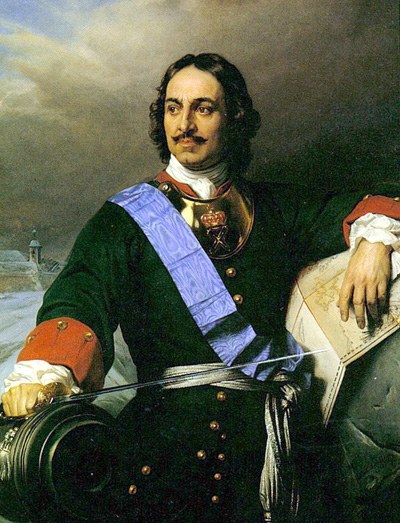
P 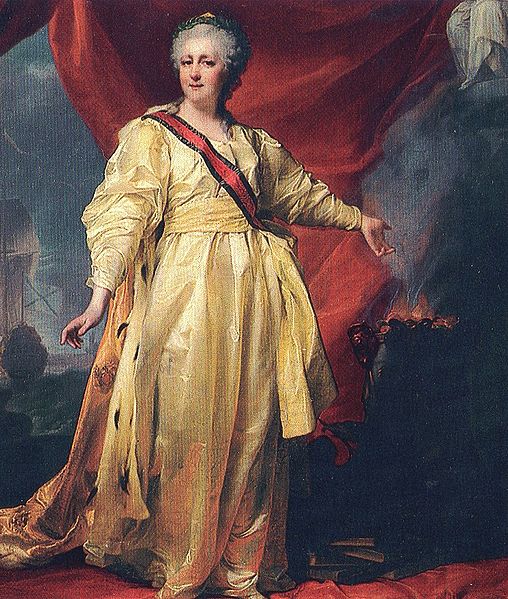 eter the Great officially proclaimed the existence of the Russian Empire in 1721. Under the Romanov dynasty and Peter I (Peter the Great), the Russian Empire became a world power. Ruling from 1682 to 1725, Peter defeated Sweden in the Great Northern War. He forced it to cede West Karelia and Ingria – the two regions lost by Russia in the Time of Troubles, Estland, and Livland. That secured Russia's access to the sea and sea trade. It was in Ingria that Peter founded a new capital, Saint Petersburg. eter the Great officially proclaimed the existence of the Russian Empire in 1721. Under the Romanov dynasty and Peter I (Peter the Great), the Russian Empire became a world power. Ruling from 1682 to 1725, Peter defeated Sweden in the Great Northern War. He forced it to cede West Karelia and Ingria – the two regions lost by Russia in the Time of Troubles, Estland, and Livland. That secured Russia's access to the sea and sea trade. It was in Ingria that Peter founded a new capital, Saint Petersburg.
Catherine II (Catherine the Great) ruled from 1762 to 1796 and continued the efforts to establish Russia as one of the Great Powers of Europe.
In alliance with Prussia and Austria, Russia stood against Napoleon's France in the reign of Alexander I (1777 – 1825) (Alexander the Blessed).
The prevalence of serfdom and the conservative policies of Nicolas I (1796 – 1855) impeded the development of Russia in the mid-nineteenth century.
Nicholas's successor Alexander II (reign: 1855–1881) enacted significant reforms, including the abolition of serfdom in 1861. These "Great Reforms" spurred industrialization. However, many socio-economic conflicts were aggravated during Alexander III’s reign and under his son, Nicholas II. Those conflicts as well as World War I brought the Russian monarchy to its downfall.
17. Work with your desk-mate and decide on the best title to the text above.
 
Speech Practice
18. Give the answers to the questions below. 1. Who proclaimed the Russian Empire? 2. What way did Russia get access to the sea? 3. What is Catherine the Great famous for? 4. What were the reasons that brought the Russian monarchy to its downfall?
Speech Practice
19. Work with your partner and compose a dialogue.


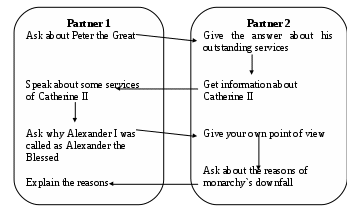
Vocabulary Training
20. Read and remember the following words and word combinations.
 
representative democracy - представительная демократия exercise – осуществлять vest – облекать, наделять Federal Assembly – Федеральное собрание bicameral – двухпалатный deem – считать, полагать
21. Read the following words and expressions and guess their meaning
 
national referendum, constitutional crisis, according to, representative democracy, the head of government, two chambers, legislative branch, the commander-in-chief of the military 22. Translate the following sentences from English into Russian.   1. The Russian Federation is fundamentally structured (состоит, структурирован, построен) as a representative democracy.
2. Legislative power is vested in (даны, дана, наделена, наделены) the two chambers of the Federal Assembly.
3. The president can veto (отменить, наложить запрет) legislative bills before they become law. 4. Judiciary branch (юридическая ветвь, законодательная ветвь, судебная власть) includes The Constitutional Court. 5. The president will be elected by popular vote (популярным голосованием, народным голосованием) for a five - year term.
Reading
23. Read and translate the text about new Russia.
M 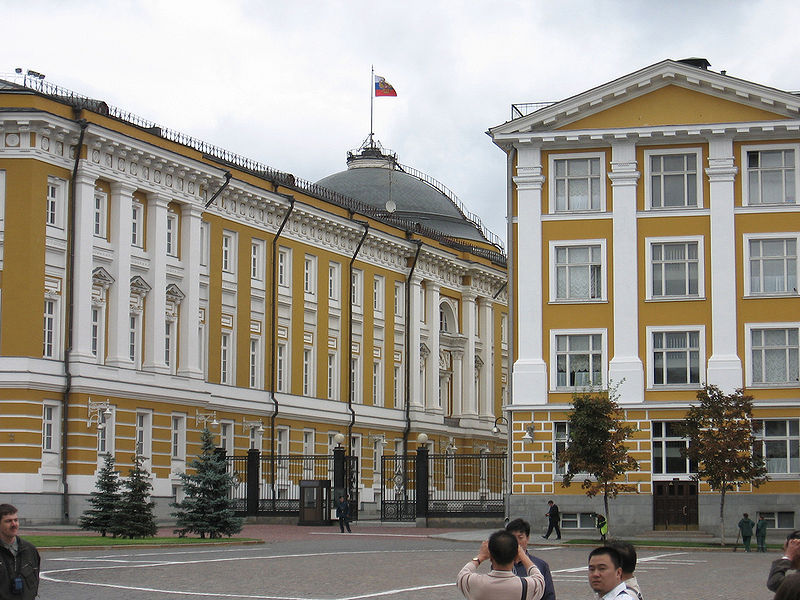 odern Russia odern Russia
The new Constitution of Russia was adopted by national referendum on 12 December 1993, following the 1993 Russian constitutional crisis.
According to the Constitution Russia is a federation and formally a semi-presidential republic, wherein the President is the head of the state and the Prime Minister is the head of the government. The Russian Federation is fundamentally structured as a representative democracy. Executive power is exercised by the government. Legislative power is vested in the two chambers of the Federal Assembly.
The federal government is composed of three branches: legislative, executive and judiciary.
Legislative branch is the bicameral Federal Assembly, which is made up of the State Duma and the Federation Council. The Federal Assembly adopts federal law, declares war, approves treaties, has the power of the purse, and has the power of impeachment, by which it can remove the President.
Executive branch is the President. The president is the commander-in-chief of the military, can veto legislative bills before they become law, and appoints the Cabinet and other officers, who administer and enforce federal laws and policies.
J 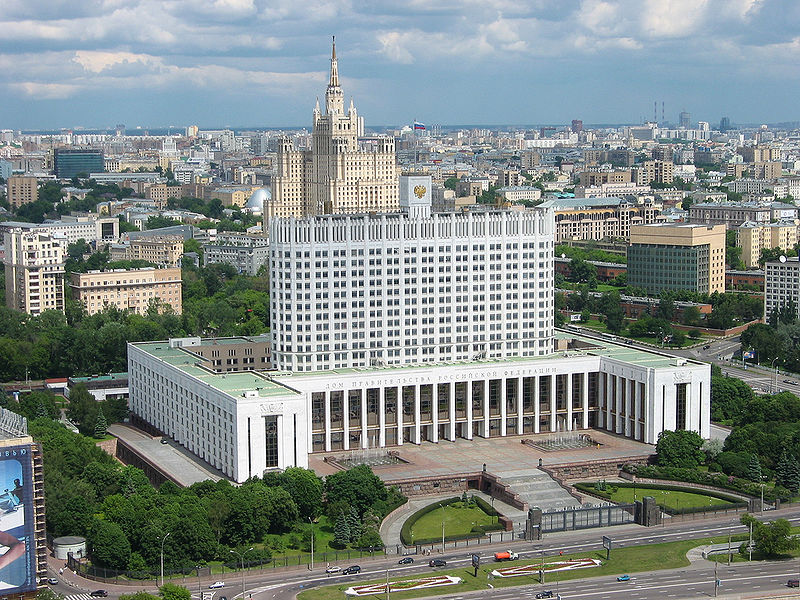 udiciary branch includes The Constitutional Court, Supreme Court, Supreme Court of Arbitration and lower federal courts, whose judges are appointed by the Federation Council on the recommendation of the president, interpret laws and can overturn laws they deem unconstitutional. udiciary branch includes The Constitutional Court, Supreme Court, Supreme Court of Arbitration and lower federal courts, whose judges are appointed by the Federation Council on the recommendation of the president, interpret laws and can overturn laws they deem unconstitutional.
The president is elected by popular vote for a four - year term. Ministries of the government are composed of the premier and his deputies, ministers, and selected other individuals; all are appointed by the president on the recommendation of the Prime Minister (whereas the appointment of the latter requires the consent of the State Duma).
Leading political parties in Russia include United Russia, the Communist Party, the Liberal Democratic Party of Russia. and Fair Russia.
24. Work together with your desk - mate.  
25. Complete the following sentences.
1. The new Constitution of Russia was adopted … .
2. The Russian Federation is structured as … .
3. The federal government is composed of … .
4. Legislative branch is … .
5. Executive branch … .
6. Judiciary branch includes … .
7. The president is elected by … .
8. Ministries of the government are composed … .
26. Give the answers to the questions below.
1. Why is Russia a semi-presidential republic?
2. What are the branches the federal government is composed of?
3. What is the president’s power?
4. What is the Federal Assembly responsible for?
5. What does judiciary branch include?
Speech Practice
27. Work in groups of three of four. Compose a conversation about modern Russia.
 
Supplementary Reading
28. Read this text about Russian language trying to guess the meaning of unknown words.
Countries where the Russian language is spoken
Russia's 160 ethnic groups speak some 100 languages. According to the 2002 census, 142.6 million people speak Russian, followed by Tatar with about 5 million and German with almost 3 million speakers. Russian is the only official state language, but the Constitution gives the individual republics the right to make their native language co-official next to Russian. Despite its wide dispersal, the Russian language is homogeneous throughout Russia. Russian is the most geographically widespread language of Eurasia and the most widely spoken Slavic language. Russian belongs to the Indo-European language family and is one of the living members of the East Slavic languages. The others are Belarusian and Ukrainian (and possibly Rusyn).
Over a quarter of the world's scientific literature is published in Russian. Russian is also applied as a means of coding and storage of universal knowledge: 60–70% of all world information is published in the English and Russian languages. The language is one of the six official languages of the United Nations.
29. Work in groups of three or four.
 
Speech Practice
30. Make groups of three or four and prepare a multimedia presentation on the topic “The Russian Federation – the past and the present”. Make groups of three or four and prepare a multimedia presentation on the topic “The Russian Federation – the past and the present”.
Check list to module V
1. When did the East Slavs emerge? 2. What was the first East Slavic state? 3. Who were the founders of Kievan Rus'? 4. What was the source of Russian Christianity? 5. What was the result of Kievan Rus' disintegration? 6. By what time has Russia become the Russian Empire? 7. Who proclaimed the Russian Empire? 8. What way did Russia get access to the sea? 9. What is Catherine the Great famous for? 10. What were the reasons that brought the Russian monarchy to its downfall?
11. Why is Russia a semi-presidential republic?
12. What are the branches the federal government is composed of?
13. What is the president’s power?
14. What is the Federal Assembly responsible for?
15. What does judiciary branch include?
Module VI
Omsk – our native city
Vocabulary training
1. Read and translate the words and word expressions below
 
southwest Siberia, beyond the Urals, the Russian Empire, the seat of, the Governor General of Western Siberia
2. Classify the words into subject groups
Imperia, distance, capital, center, kilometres, southwest, imam, bishop
3. Remember the words and word combinations given below.
Proclaim - провозглашать
see of the bishop – епархия митрополита (епископа)
gold reserves – золотой запас
4. Read this text quickly and define the main idea of this text.
 
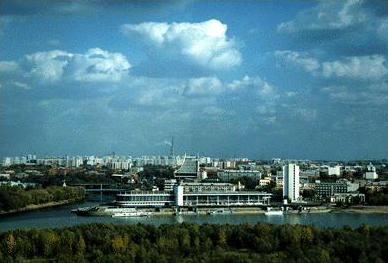
?
Omsk is a city in southwest Siberia in Russia, the administrative center of Omsk Oblast. It is the second-largest city in Russia beyond the Urals. The distance from Omsk to Moscow is 2,700 kilometres.
In the Russian Empire, it was the seat of the Governor General of Western Siberia. For a brief period during the Russian Civil War in 1918–1920, it was proclaimed the Capital of Russia, and held the imperial gold reserves.
Omsk is the administrative centre of Siberian Cossacks, the see of the bishop (metropolitan) of Omsk and Tara, and the imam of Siberia.
5. Using the information from the text above, complete these sentences.
1. Omsk is the second-largest … .
2. In the Russian Empire … .
3. … it was proclaimed the Capital of Russia … .
4. Omsk is the administrative centre … .
6. Work with your partner. Compose 4 or 5 questions to the text.


7. Read and remember the following words and word combinations.
 
confluence – слияние
altitude – высота
freight – фрахт, груз
lumber-rich – богатый пиломатериалами
scheduled – по расписанию
destination - место назначения
8. Read and translate the words and expressions.
north-flowing, Trans-Siberian railway, mineral-mining towns, important air gateway, the Far East
Reading
9. Read and translate the text about location of Omsk city.
Location
O 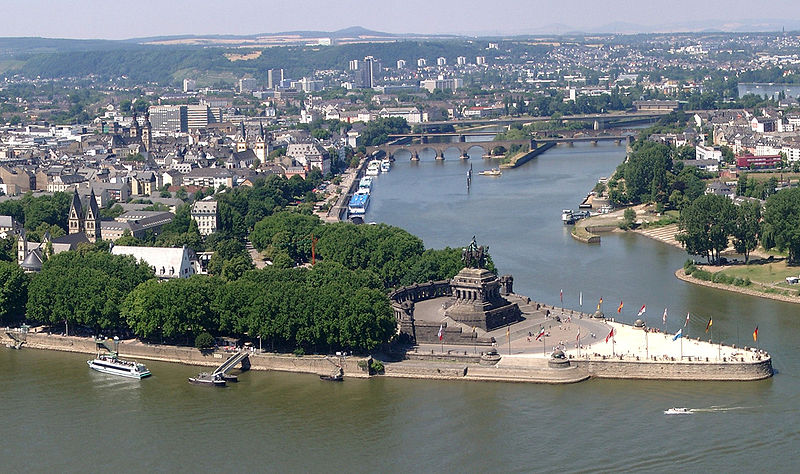 msk is situated on the banks of the north-flowing Irtysh, at its confluence with the Om River, at an altitude of 87 metres, and on both branches of the Trans-Siberian railway. It is 2,700 kilometres east of Moscow. The Irtysh and the Ob Rivers connect Omsk with coal and mineral-mining towns in Kazakhstan, as well as oil, natural gas and lumber-rich northern Siberia. Scheduled and charter flights link Omsk Tsentralny Airport with multiple domestic and international (primarily, German) destinations, making it an important air gateway to Siberia and the Far East. msk is situated on the banks of the north-flowing Irtysh, at its confluence with the Om River, at an altitude of 87 metres, and on both branches of the Trans-Siberian railway. It is 2,700 kilometres east of Moscow. The Irtysh and the Ob Rivers connect Omsk with coal and mineral-mining towns in Kazakhstan, as well as oil, natural gas and lumber-rich northern Siberia. Scheduled and charter flights link Omsk Tsentralny Airport with multiple domestic and international (primarily, German) destinations, making it an important air gateway to Siberia and the Far East.
10. Answer the questions to the text. 1. Where is Omsk situated? 2. What altitude is Omsk situated at? 3. How distant is Omsk from the capital of RF? 4. What makes Omsk an important air gateway to Siberia and the Far East? 5. Does Omsk have links with many domestic and international destinations?
11. Complete the following sentences using the contents of the text
1. Omsk is situated on ... .
2. …. on both branches of the Trans-Siberian railway.
3. The Irtysh and the Ob Rivers connect ... .
4. ... makes Omsk an important air gateway to Siberia and the Far East.
Vocabulary Training
12. Read and remember the following words and word combinations
 
erect – возводить
|
 Скачать 4.24 Mb.
Скачать 4.24 Mb.




 eter the Great officially proclaimed the existence of the Russian Empire in 1721. Under the Romanov dynasty and Peter I (Peter the Great), the Russian Empire became a world power. Ruling from 1682 to 1725, Peter defeated Sweden in the Great Northern War. He forced it to cede West Karelia and Ingria – the two regions lost by Russia in the Time of Troubles, Estland, and Livland. That secured Russia's access to the sea and sea trade. It was in Ingria that Peter founded a new capital, Saint Petersburg.
eter the Great officially proclaimed the existence of the Russian Empire in 1721. Under the Romanov dynasty and Peter I (Peter the Great), the Russian Empire became a world power. Ruling from 1682 to 1725, Peter defeated Sweden in the Great Northern War. He forced it to cede West Karelia and Ingria – the two regions lost by Russia in the Time of Troubles, Estland, and Livland. That secured Russia's access to the sea and sea trade. It was in Ingria that Peter founded a new capital, Saint Petersburg. 








 odern Russia
odern Russia udiciary
udiciary







 msk is situated on the banks of the north-flowing
msk is situated on the banks of the north-flowing 